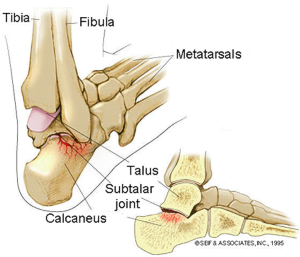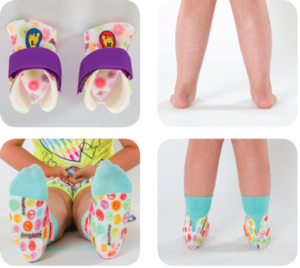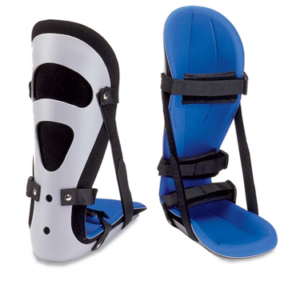Contact Us
What is an SMO and its function?
SMO is the acronym for Supra-Malleolar Orthosis, meaning it supports the foot just above the anklebones or malleoli. They are used primarily to control subtalar joint alignment. The subtalar joint can be described as the joint in the foot located at the meeting point of the talus and calcaneus, more commonly referred to as the heel bone (Figure 1). This joint is crucial to movement as it helps adjust the mediolateral movement (side-to-side) of the foot while navigating through uneven and shifting terrain as well as allow us to perform dynamic movements with precision. As vital as the subtalar joint is, it is vulnerable to wear and tear, trauma, and other joint-specific disorders. Any impairments to this area of the foot or supporting connective tissue can induce pain, lead to foot deformities, and affect gait and mobility in both adults and children.

When the subtalar joint is compromised, SMOs are often prescribed and designed to maintain a vertical, or neutral heel to help improve standing balance and walking. SMOs are typically prescribed to those with soft, flexible, flat feet, who tend to excessively pronate (Figure 2), walk on their toes, or have low muscle tone. Over time, excessive pronation can cause stress on the knees, hips and lower back by changing the natural alignment of the lower extremities which fatigues leg muscles at a faster rate. Lower extremity changes are also a consequence in those who naturally walk on their toes; muscle stiffness, tightening, and pain can be seen in long-term toe walkers. Those with low muscle tone often have gross motor and developmental delays due to muscle weakness and ligamentous laxity affecting overall joint stability. Fortunately, SMOs aid in controlling excessive pronation and toe walking and provide stability to individuals with low muscle tone.
As a result of innovative companies, such as SureStep (Figure 2), pediatric SMOs are made from extremely thin, flexible thermoplastic and have patented trimlines. They are designed to compress the soft tissue of the foot in order to stabilize the foot and ankle by maintaining appropriate and neutral alignment while still allowing the child to develop their own muscle movements and patterns. For this reason, they can be worn comfortably inside a pair of shoes giving the child the freedom to run, jump, and play naturally. Adult SMOs function in the same way as pediatric SMOs by maintaining and improving ankle-foot alignment, however, adult SMOs are sometimes crafted from highly durable carbon fiber material. Carbon fiber SMOs are lighter weight and thinner when compared to plastic adult SMOs. The decision regarding material choices is left up to your practitioner.





